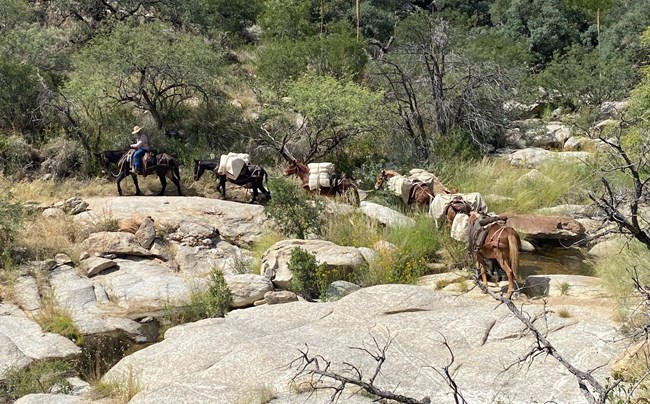

Of the more than 400 national parks in the National Park System, only 108 charge an entrance fee. The current Federal Lands Recreation Enhancement Act (FLREA) allows the National Park Service to collect and retain revenue and requires that fee revenue is used to enhance visitor experience. At least 80 percent of funding from recreation fees stays in the park where it is collected, and the other 20 percent is used to benefit parks that do not collect fees or parks which generate only a small amount of revenue.
What does that mean for our national parks and for you?
Pick a park on the map below to learn more about how they use recreation fees to benefit you.
The National Park Service is authorized to use entrance and recreation fees for a variety of items related to the visitor experience. Examples include:
Habitat Restoration (Wildlife Dependent Recreation)
Since 2006, the National Park Service has had an entrance fee structure in place that simplifies and standardizes entrance fees across parks of similar types.
Entrance fees are an important source of revenue used to improve the visitor experience and recreation opportunities in national parks and on other federal lands.
The National Park Service is committed to enhancing the visitor experience, and fee revenue helps improve visitor facilities and infrastructure in parks.
Yes, the America the Beautiful National Parks and Federal Recreational Lands Pass Series is still available. There are eight passes in this series. The Annual Pass and lifetime Senior Pass are both $80. The Senior Annual Pass is $20. The Access Pass, Military Annual Pass for current US Military, Military Lifetime Pass for veterans and Gold Star Families, and Annual 4th Grade Pass are free.
Fees are an important source of revenue used to improve the visitor experience, including recreational opportunities, in national parks. Approximately 80 percent of the money from entrance fees remains in the park where it was collected. The remaining 20 percent is distributed to those parks that do not collect fees.
Reducing cash collections allows the National Park Service to be better stewards of the fees collected from visitors. Cashless options reduce transaction times at busy entrance stations and decrease the risk of theft. Moving to a cashless system improves accountability and consistency, reduces chances of errors, and maximizes the funding available for critical projects and visitor services.
Each park that has completed the transition to cashless fee collection has an alternative option for visitors who are not able to pay with a credit or debit card. The specific arrangements vary by park, and park staff onsite will be able to assist.
Most parks that have converted to cashless fee collection have had an overwhelmingly positive experience.
Entrance fees for national parks predate the establishment of the National Park Service in 1916. For example, Mount Rainier National Park started charging an entrance fee in 1908.